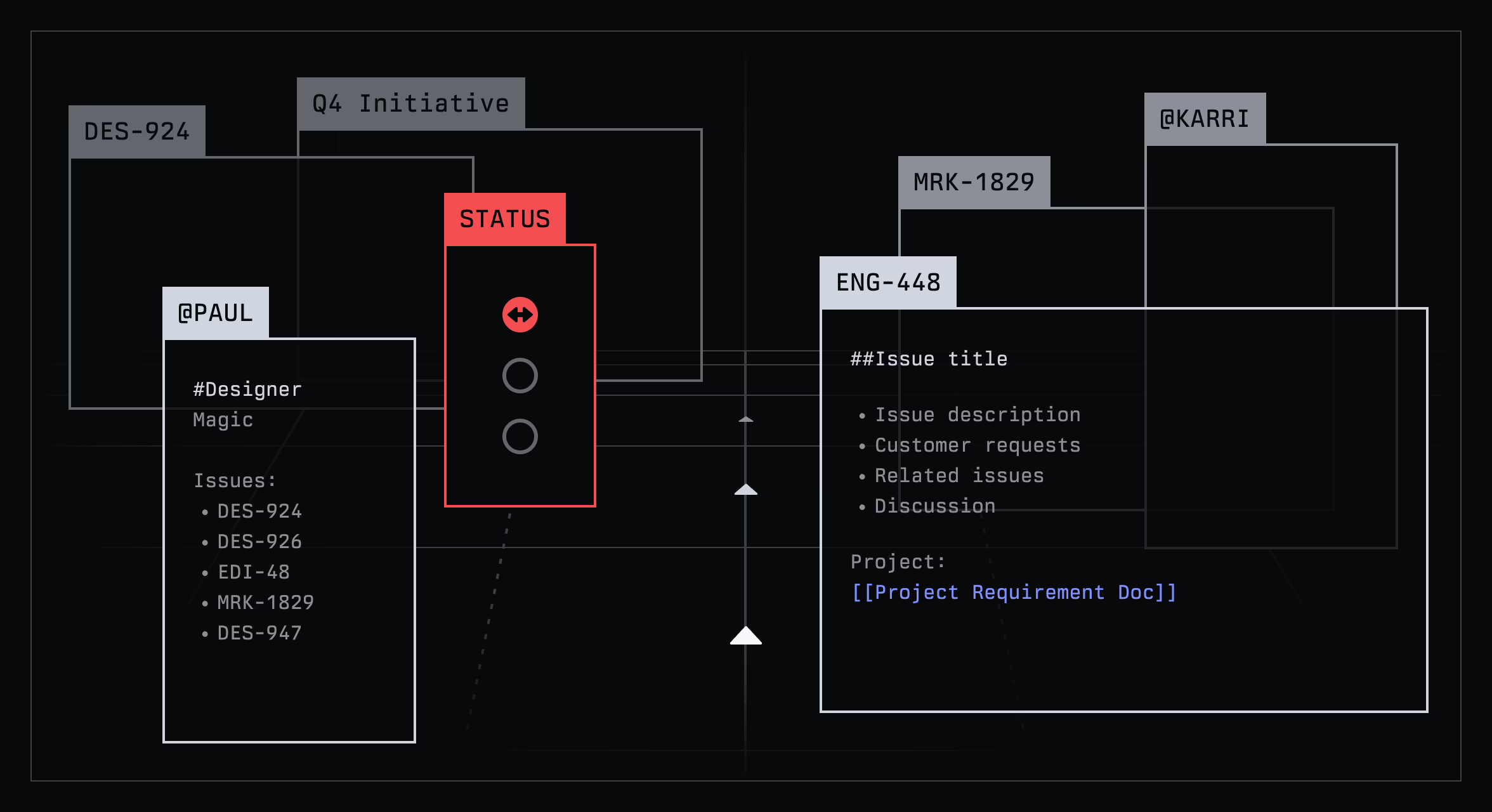Self-driving SaaS: When software runs itself

Traditional business software has always existed to facilitate and guide human actions. It creates efficiency through its constraints, capabilities, and nudges, but its ultimate value is only as great as the effort users put into it.
Project management software is a good example. It establishes channels for a well-defined set of human actions: users create and triage issues, merge duplicate bug reports, and write updates as projects advance. The software provides all sorts of supports, reminders, and guardrails, but human users still do the work.
Enter the Chatbot Era
The first instinct that many incumbents have had with AI has been to layer a helper chatbot on top of existing systems. You can prompt the chatbot to draft a document, tell it to create a research report, ask it to group or categorize items, or otherwise enlist it to operate your app.
These chatbot workflows can look magical in a demo, but they're really just the old ways of working dressed in a new interface. Human users are engaged in all the same tasks they’ve always been. They’re still nudging the system along every step of the way, only now using prompts instead of button presses.
Self-driving software
Real change comes when AI stops requiring constant input and instead proactively moves work forward. Rather than constantly requiring user attention and input, the systems of the future will be self-driving.
In our project management example:
- Customer requests are automatically extracted from inbound support tickets, customer research, and sales calls. Any communication the organization has with its current or potential customer base is used as context by the system for generating new issues and requirements.
- Newly created issues are analyzed, researched, and automatically assigned to the correct team, project, and person. The system uses the past completion history, existing backlog, and future roadmap as context to understand what to do.
- Simple changes are dispatched to a coding agent and completed without additional intervention. More complex requirements are automatically collated into project specifications and as new requirements roll in, the system keeps documentation up to date with the latest information.
In this new world you, the user, are still in control—you decide which projects to pursue and where to allocate your resources—but the system moves everything forward on its own.
Our vision for Linear
In case it wasn't obvious, this is our vision for Linear: a system of planning and building that operates autonomously on your behalf.
We've already started to build and release features to make this a reality. Like with self-driving cars, they can be adopted and operated at different levels of autonomy.
At the most basic level, the system suggests actions the way a lane-departure warning beeps when you drift. In Linear that looks like recommendations for which teams to assign an issue to or which labels to apply. You can use these assistive hints or not.
At moderate autonomy, the system takes the first pass and you correct what doesn’t fit, similar to the lightly interactive way drivers use adaptive cruise control. The car does most of the driving, but you can still nudge the steering wheel or tap the brake. In Linear, you can set up rules that direct the system to auto-apply suggestions selectively, under the conditions of your choosing. We also clearly identify these AI actions after they’ve been taken, so you can easily reverse or modify them.
At full autonomy, you can take your hands off the controls entirely and the system drives the work from start to finish. You merely step out of the car at the end of the trip and confirm you arrived at the right destination. In Linear, this means identifying classes of issues that can be completely handled by coding agents and guiding the system to automatically dispatch them. Human users only become involved when evaluating the final result.
To get there, capabilities and culture both need to progress. The adoption path there isn't just flipping on a switch. It's learning how to adjust your workflows to take advantage of the system's ever-improving abilities.
Transforming the nature of work
Whenever a new technology arrives, our first instincts are usually naive. There’s a tendency to graft the new thing onto what already exists, often awkwardly.
But we know the real leap comes when people adjust their mental models and start to imagine what the technology makes possible on its own terms.
We can already anticipate that the self-driving cars of the future won’t just be sedans where no one's sitting in the driver's seat. They'll be living rooms or offices on wheels that free your time and attention to focus on what you value.
How will the job of building software look when your attention doesn't need to be spent on routing issues, merging duplicates, writing status updates, debriefing call notes, maintaining documentation, or fixing minor issues? You’ll be entirely focused and present when engaging with your users, discovering their problems, and imagining what’s possible.
Read more here about how we’re building AI workflows for modern product teams.
